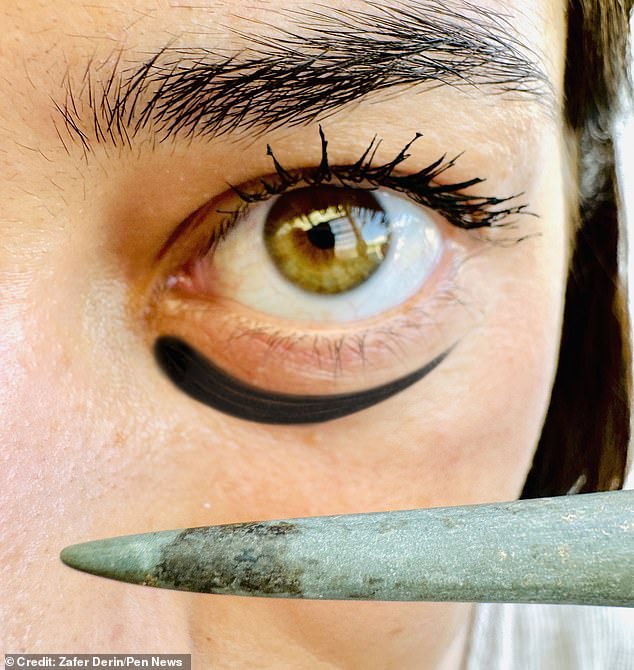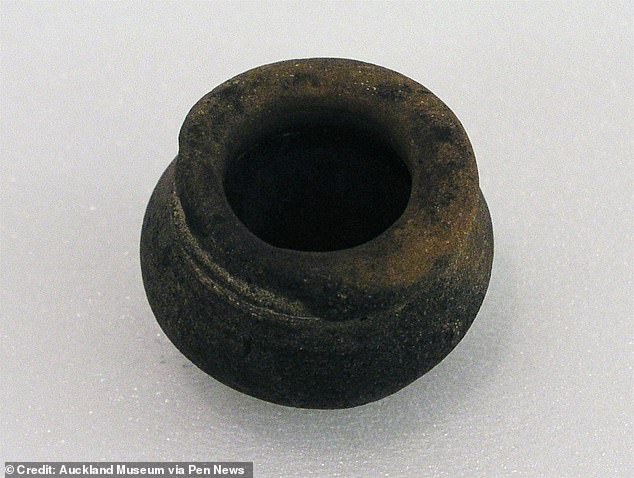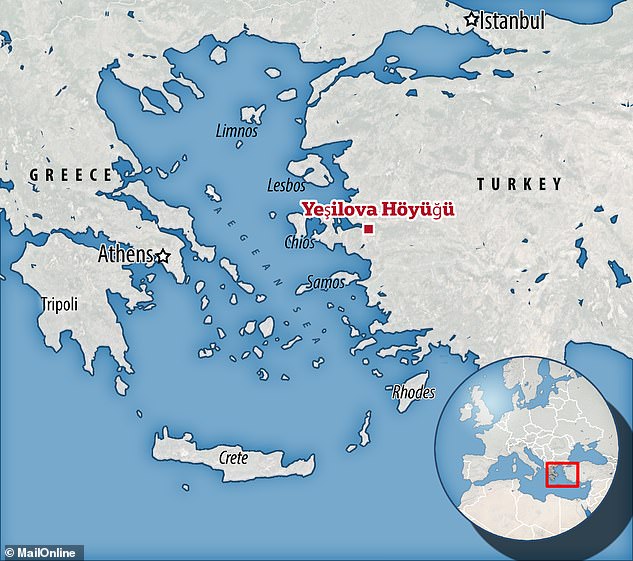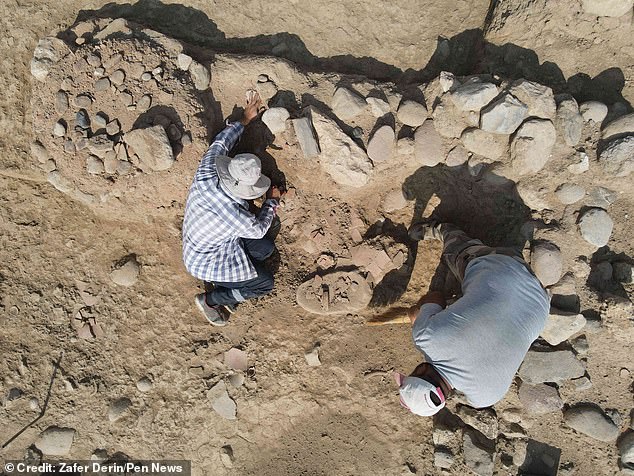Scientists discover the oldest eyeliner from the ruins of a prehistoric city in Turkey – and the tip is still black after its last use 8,200 years ago!
- Archaeologists have discovered the oldest eyeliner in the world in Turkey
- It is said to have been used to apply pigment for aesthetic and medical reasons
The oldest eyeliner ever found has been unearthed in the ruins of a prehistoric city, revealing that people used makeup more than 8,000 years ago.
The Kohl stick – a type of eyeliner that is still used today – was discovered in Yeilova Höyük, an ancient settlement in western Turkey.
It’s made of green serpentine stone and, remarkably, still has traces of black paint on the tip from the last time it was last used.
Lead archaeologist Zafer Derin said: ‘For centuries, kohl has been worn by individuals of all genders, statuses and socio-economic levels.’
It has been used in various parts of the world, namely Egypt, the Levant, Syria, Iran and Anatolia.
Archaeologists have discovered the world’s oldest eyeliner (pictured), which was used to apply black paint more than 8,000 years ago

The tip of the Kohl stick is still black from the last time it was used to apply makeup 8,200 years ago. This photo illustrates what Kohl makeup could look like
‘It has been used since ancient times to this day and is still used in many regions.
‘The kohl stick found in Yeşilova Höyük is the oldest known example ever found.
“This could show how much the first Aegean women who lived in Yeilova loved their beauty.”
The artifact was found in a Neolithic layer that is about 8,200 years old.
The Yeilova Höyük area is an ancient site in the modern-day Turkish city of Izmir.
Archaeologists believe the area was continuously inhabited between 6500 BC and about 4000 BC.

Ancient civilizations used a sharp stick called a kohl stick to apply dark pigment (pictured) to their eyes as makeup

The artifact was discovered in the ancient settlement of Yeilova Höyük, in the modern-day city of Izmir, Turkey.

The artifact was discovered in a Neolithic layer believed to date from around 6500 BC
Excavations have uncovered the remains of reeds used to make huts and ash from cooking fires in the oldest layers.
More recent layers reveal the development of a large Neolithic settlement with stone houses, workshops and courtyards.
However, the original Neolithic site where the artifact was found was abandoned and destroyed by fire in 5700 BC, leaving the area hidden under a layer of silt for thousands of years.
The kohl stick, which is just under 4 inches long and an inch thick at the handle, is just one of the many innovations developed by the residents of Yeşilova Höyük during this period.
Dr. Derin said it was “very well smoothed and shaped into a sharp tenon.”

It is believed that the site of Yesilova Höyük was continuously inhabited between 6500 BC and 4000 BC. The people who lived there are said to have used kohl as make-up and as medicine
It would have been dipped in a tub of kohl and then used like a modern eyeliner pencil.
The black substance on the tip has been sent for analysis, but it is believed to be manganese oxide, one of the components of kohl.
Still, its use hasn’t been purely cosmetic, Dr. Derin added.
He said: ‘As is known from many written texts, paintings and sculptures in ancient Egypt, kohl was used mainly for the treatment of eye diseases and not for an aesthetic function.
‘It was also thought to reduce the brightness of the sun by applying it thickly around the eyes.’
Kohl is made by grinding stibnite, a mineral found in hydrothermal deposits.
The cosmetic, called ‘al-kuhl’ in Arabic, also indicates the origin of the English word ‘alcohol’.
